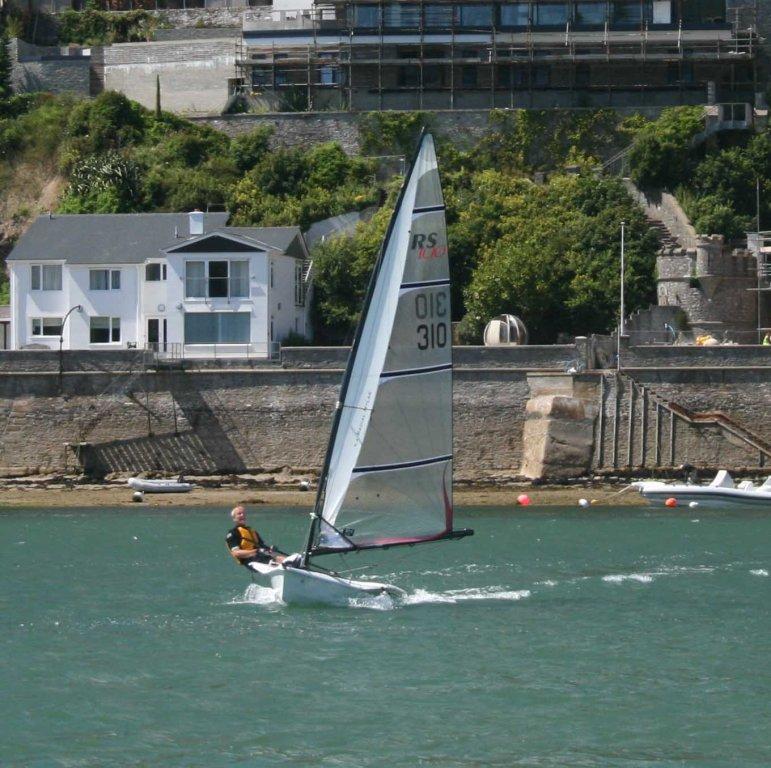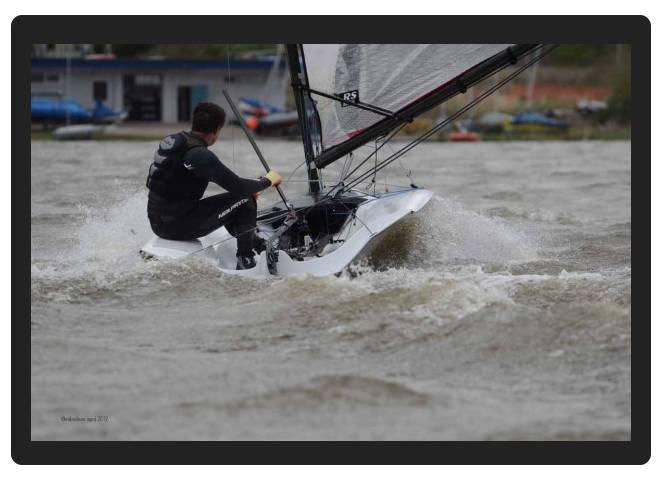|
11/01/2015 19:33:55
.jpeg)
John Burns
Posts: 10 | Had a nightmare dropping the kite today in force 6-7. As I moved on to a run to sit in the boat and drop the kite it became extremely unstable. In no time the kite had hit the water and I was still trying to haul it in. other than moving my hands at light speed are they any tips. Got the kite up no problem and went like a rocket. poor drop ended up with many mast washes and lots of swimming. Cheers guys JB
|
11/01/2015 19:44:09

Posts: 0 | Dead run, boom hard against shrouds, kite behind main, bit of windward heel (safety position) - Simples !!
|
11/01/2015 19:59:11

Posts: 0 |
Photo of the above - note kite is fully behind the main. Note the windward heel - this is key to staying in control.
This was at the L&L open event, which was pretty breezy.
|
11/01/2015 20:12:04

Posts: 0 |
Sorry to keep adding things but I keep remembering them ! John as you point out things can get pretty lively when you are deep reaching in the 100 - the boat has NOT got a lot of volume forward and without the kite it is difficult to keep the bow out and any sort of very broad reach without the kite it gets pretty hairy. The boat is a lot more stable with the kite up even in very big gusts - you just hide it behind the main and it keeps things much more calm. You can run into real problems if you drop too early or you take a swim just before the downind gate - getting down there without the kite can result in a LOT of swimming ! In these conditions I adopt the safety position and usually leave the drop as late as possible - certainly avoid trying to broad reach in without the kite. Hope this helps. Chris
|
11/01/2015 21:07:44
.jpeg)
John Burns
Posts: 10 | Thanks Chris, That all makes sense. I flew the kite each time on the leg and it was crazy but under control until the drop. I didn't hide the kite behind the main. I dropped early on one occasion thinking it would be a safe option. My safety position was more of a death role. One leg seemed just that bit too tight for the kite and it was hard work hanging out the back to keep the bow up.
|
11/01/2015 21:14:59
.jpeg)
John Burns
Posts: 10 | Thanks Chris, That all makes sense. I flew the kite each time on the leg and it was crazy but under control until the drop. I didn't hide the kite behind the main. I dropped early on one occasion thinking it would be a safe option. My safety position was more of a death role. One leg seemed just that bit too tight for the kite and it was hard work hanging out the back to keep the bow up.
|
11/01/2015 21:32:55

Posts: 0 | I'd add one thing to Chris's advice. Part of the problem is that the kite is doing attention-seeking-behaviour as a complaint against not being trimmed as it would like, so the amount of power it provides fluctuates wildly, making the boat unstable. If you can get the retrieving line tight, it just kills any power in the kite, so pull the retriever line tight first, before releasing the halyard. Then you only have the power from the main to contend with! In extremis, at this point I might even luff up, leaving the main out. The main will then flap and the boat slow down as you will be sort of heave-to, but it gives you a couple of seconds to get the rag down the hole. But don't take too long! A more desperate and risky method if you can't even sit in, is to flip the kite halyard trip line that is led out to the gunwale and let go of the sheet too. It far messier but sometimes the only option. None of these are elegant, but sometimes, needs must
|
11/01/2015 22:22:33
.jpeg)
John Burns
Posts: 10 | Hi Clive, I haven't tried pulling the retriever line tight but makes sense. It was a very unstable moment on every drop and I guess that's the fluctuating power. Infact I don't even remember what I was doing with the tiller whilst grabbing for the line. I have the wipe out line fitted and used it once but the kite hit the water before I could get it away, the boat luffed up, the boom hit the water and I was in with a big water balloon hanging at the front. I had the main uncleated and so all the way out on the shrouds. This gave me a new problem. The main sheets flipped themselves over the top of the boom. This led it big issues trying to sheet in and out.
|
12/01/2015 07:01:55

Andy Butler
Posts: 3 | Can someone clarify what the wipe out line/trip line to gunwhale is? I don't think I have anything like that.
|
12/01/2015 07:19:43

Posts: 0 | It's on this page of my website, but needs scrolling down the page
http://clubsailor.co.uk/wp/bimbles/rs100-bimbles/
|
12/01/2015 08:23:49

Posts: 0 | Trip line is a great thing to fit, not only has it saved my bacon a few times, when swimming was becoming a real possibility, it's also helped me avoid a couple of collisions!
One mistake I made quite a bit at the start when going for the drop was getting to far into the boat in haste to grab handfuls of halyard and suck the kite down the hole, i now try and get the boat heeled slightly to windward or certainly flat and not get too far into the centreline, the tip below about the quick luff up helps in F6+ but, as said below, the main needs do be dumped before you attempt this!
One other thing, I also find that easing the kicker off a long way is helpful in losing power out of the main in big gusts or coming to the drop.
|
12/01/2015 12:07:25

Andy Butler
Posts: 3 | Ah, now that looks extremely useful. Definitely one for me to fit. Thanks particularly to Clive for the link to the photos. I also like the strops for the tack. Presumably they are two separate loops - one round the boom and the other round the mast. Where do you aim for the tack to finish up - distance off the boom and behind the mast? Presumably when rigging the boat, you raise the main fully before fitting the line round the boom.
|
12/01/2015 12:24:03

Posts: 0 | Glad they help. As to the rope shackles on the mainsail tack, I've dispensed with the one around the boom, it never seemed to do anything. So I now have one, thru the aftermost of the two deck-eyes on top of the boom and then the tack on the main. I guess it is about 4 inches long in total, so half that for the distance from eye to cringle, given it's a loop. I did this because I found the standard issue metal shackle too short, sending creases into the middle of the sail as soon as the kicker is eased. I seem to be addicted to splicing spec12 etc, so a rope shackle with bobble seemed easier to source, lighter and cheaper... Oh, and I fit the tack loop on before hoisting the main. Just keep pulling the halyard until the sail reaches the top - the last bit prebends the mast On a separate point, my kicker is virtually always eased as far as it will go as soon as I am headed downwind
|
.jpeg)

.jpeg)
.jpeg)
.jpeg)

















